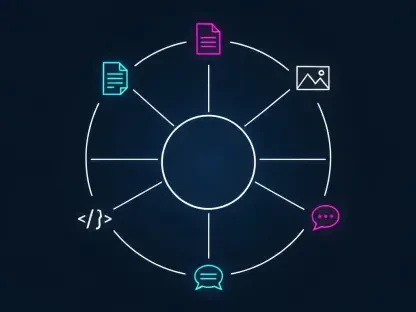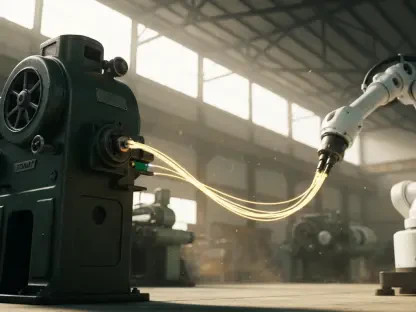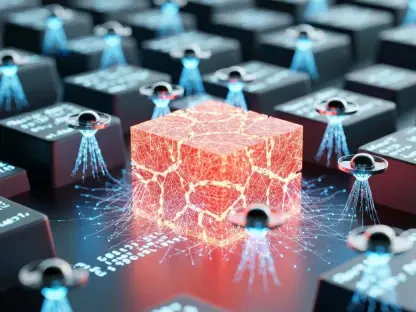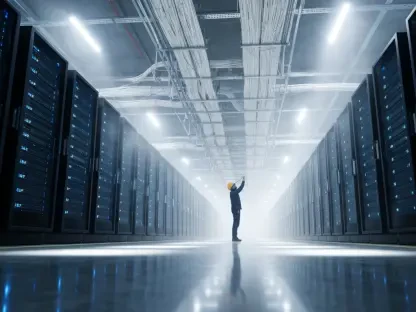Oscar Vail is a notable figure in the technology landscape, particularly known for his pioneering work in quantum computing, robotics, and open-source projects. His insights into how innovative mechanics and design paradigms can amplify the capabilities of robotics offer a fascinating glimpse into the future of technology. In this interview, Oscar discusses the intricacies of robot design, the concept of embodied intelligence, and the challenges of balancing mechanical and software development.
What are some tasks that robots can perform with the help of artificial intelligence?
Artificial intelligence has revolutionized robotics by enabling machines to handle tasks that traditionally required human intelligence. Robots can perform a wide range of activities, from simple repetitive actions in manufacturing to complex problem-solving tasks in fields like healthcare and logistics. They can recognize patterns, respond to voice commands, and adapt in real-time to new situations. This evolution significantly enhances productivity and efficiency in various industries.
Could you explain why there is a need for an alternative to conventional robot design?
Traditional robot design focuses heavily on software control to dictate behavior, akin to a puppeteer with strings. While this approach works for precise tasks, it falls short in mimicking the fluidity and efficiency of natural movement found in living organisms. The current model often results in robots that are energy-intensive and mechanically simplistic. Exploring alternative designs can lead to more agile and efficient robots that better leverage both hardware and software.
How does the current approach to robot design limit their motion efficiency and agility?
The predominant design philosophy hinges on using simple mechanical constructs driven by sophisticated software. Although this can achieve precision, these robots lack the adaptability and nuanced motion control inherent in biological organisms. Living beings exploit the mechanical properties of their bodies to move efficiently—traits underutilized in current robotic systems. This design limitation constrains a robot’s ability to perform dynamic or energy-efficient movements.
What are some examples of robots that imitate animals, and how do they differ from real animals in terms of energy consumption and movement?
Animal-inspired robots, like those mimicking quadrupeds, are engineered to replicate the movement of creatures such as dogs or cats. While they do resemble their biological counterparts in form, they differ significantly in how they function. These robots often require much more energy to perform basic movements compared to real animals, which leverage complex biomechanical interplays to move fluidly and sustainably, using minimal energy.
In what ways do biological movements rely on the body’s mechanical properties, and how can this inspire robot design?
Biological movements are mastered through the intricate interplay of mechanical properties and environmental interactions. For instance, muscles and tendons work synergistically to create efficient motion, adapting naturally to external forces. This concept of compliance and adaptation can greatly inspire robotics, suggesting a shift towards designs that incorporate flexible materials and mechanisms to recreate this efficiency in robotic movements.
Can you elaborate on the concept of “embodied intelligence” and its significance in robotics?
Embodied intelligence proposes that cognition isn’t solely the domain of the brain or processor, but also involves the body and its interaction with the environment. In robotics, this means designing robots that can process and respond to sensory inputs through mechanical and decentralized control, allowing for more natural and efficient responses. Incorporating embodied intelligence could reduce the computational load on robot’s software, freeing up resources for higher-level tasks like planning and perception.
Why is a simple mechanical design paired with advanced software not enough to create truly intelligent robots?
Simplicity in mechanical design limits a robot’s capabilities to respond dynamically to its environment. When too much emphasis is placed on software, it creates a bottleneck where the software must compensate for the mechanics’ lack of adaptability. Truly intelligent robots require a harmonious integration of both hardware and software, where the mechanical design actively contributes to the intelligent behavior, analogous to how movement in nature is not solely controlled by the brain.
What are soft robots, and how do their control mechanisms differ from traditional robots?
Soft robots represent a departure from traditional rigid structures, utilizing flexible materials that mimic the elasticity and agility of biological organisms. They rely more on the inherent properties of their materials for movement and control, often utilizing physical principles rather than digital controllers. This approach can result in robots that are better at handling variable environments and tasks, with control mechanisms that harness natural movement dynamics.
Could you describe the concept of “physical control” in soft robotics and the control mechanisms involved?
Physical control in soft robotics refers to the utilization of the materials’ intrinsic properties to manage movements and functions. An example includes self-oscillating valves, which control the flow of air or fluid through the robot to create rhythmic motions. These mechanisms capitalize on the non-linear properties of materials to autonomously coordinate tasks, reducing the need for complex digital control systems often required in traditional robotics.
How do self-oscillating valves work, and what role do they play in controlling robot movements?
Self-oscillating valves operate by modulating air pressure in a cyclical manner. As air pressure builds, it triggers the valve to open and release pressure, then close as pressure drops, thereby creating continuous rhythmic cycles. This rhythmic control can drive components of the robot in a predictable and energy-efficient manner, facilitating complex movements with minimal direct computational control, highlighting how mechanical design innovation can complement software.
What compromises might be necessary in the future of robotics between software and mechanical design?
In the future, robotics will require a thoughtful balancing act between the degree of software intelligence and the composition of mechanical systems. While software will continue to play a critical role, optimized mechanical designs that naturally harness physical interaction must be developed. This integration could involve using materials and structures that do a substantial part of the sensory and reactive functions, allowing the software to focus on strategic decision-making facets.
In your opinion, what advancements are needed in robot body design to achieve intelligence similar to living beings?
To mimic the intelligence of living beings, robotic designs need advancements that integrate adaptive and responsive material compositions. These would allow robots to naturally adjust mechanics to varying situations without heavy computational intervention. Drawing inspiration from the complexity and simplicity of nature’s solutions, focus should be on developing materials and structures that support autonomous adjustments, coupled with software that enhances strategic adaptability rather than controlling every motion.









